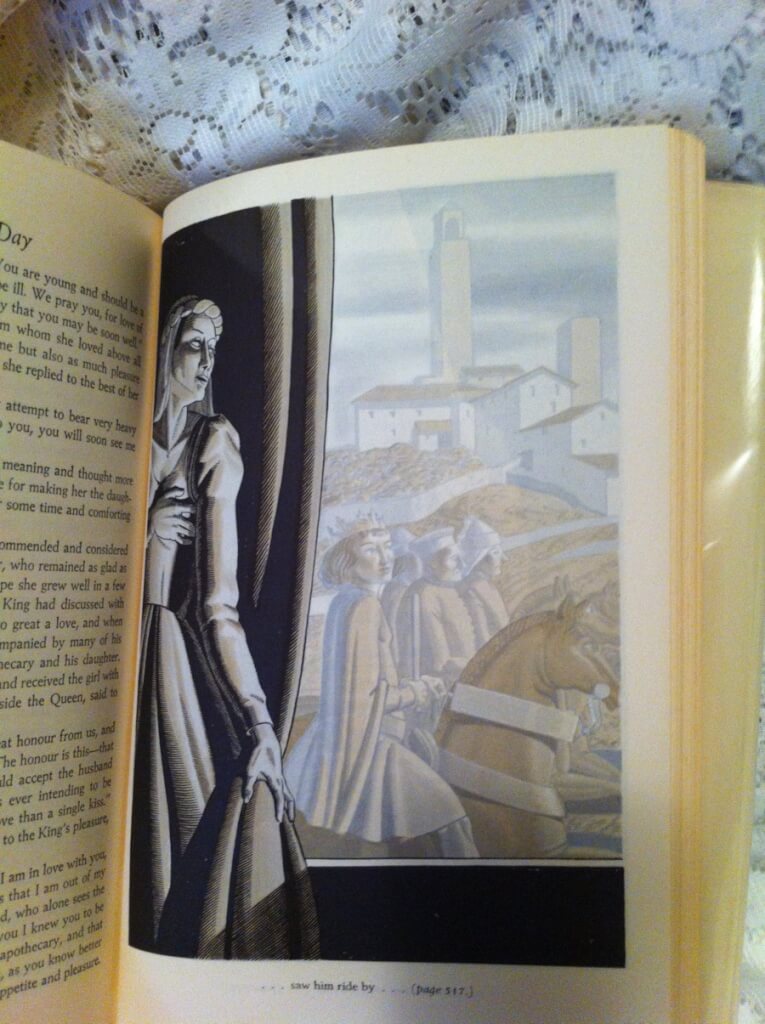Le Sopha, conte moral by Crébillon fils, illus. Hanriot (Ch. Gilliet, Bruxelles, 1881, #380/550, Imprimerie Clerbaut & Cie.)
5″x7.5″, 342pp, 3/4 morocco over marbled boards, 5 raised bands, gilt titles on spine (title worn), marbled endpapers, top-edge gilt, other edges deckled, printed on hand-laid “papier de Hollande”, green ribbon intact, frontispiece with tissue guard and 2 small engravings by Hanriot, beautifully bound copy in very good+ condition with delicate engravings
Le Sopha, conte moral is a 1742 libertine novel by Claude Prosper Jolyot de Crébillon (Crebillon fils). It was first translated into English in the spring of 1742. The story concerns a young courtier, Amanzéï, whose soul in a previous life was condemned by Brahma to inhabit a series of sofas, and not to be reincarnated in a human body until two virgin lovers had consummated their passion for him. The novel is structured as a frame story in an oriental setting, explicitly evocative of the Arabian Nights, in which Amanzéï recounts the adventures of seven couples, which he witnessed in his sofa form, to the bored sultan Shah Baham (grandson of Shehryār and Scheherazade). The longest episode, that of Zulica, takes up nine chapters; the final episode concerns the teenage Zéïnis et Phéléas. Amanzéï, witnessing their innocent pleasure, is edified and freed through the experience of virtuous love. Many of the characters in the novel are satirical portraits of influential and powerful Parisians of Crébillon’s time; the author takes the opportunity to ridicule hypocrisy in its different forms (worldly respectability, virtue, religious devotion).
Claude Prosper Jolyot de Crébillon (1707-1777) was a French novelist. He was called “Crébillon fils” to distinguish him from his father, a famous tragedian, Prosper Jolyot de Crébillon. The publication of Tanzaï et Neadarne, histoire japonaise (1734), which contained thinly veiled attacks on the Papal bull Unigenitus, the cardinal de Rohan and others, landed him briefly in the prison at Vincennes. Although Le Sopha was published anonymously and with a false imprint, Crébillon was discovered to be the author and was exiled to a distance of thirty leagues from Paris on April 7, 1742. He was able to return on July 22, after claiming that the work had been commissioned by Frederick II of Prussia and that it had been published against his will.
Jules-Armand Hanriot (1853-1930) was a French painter, engraver and illustrator.



















Reviews
There are no reviews yet.